

Suunto Blog
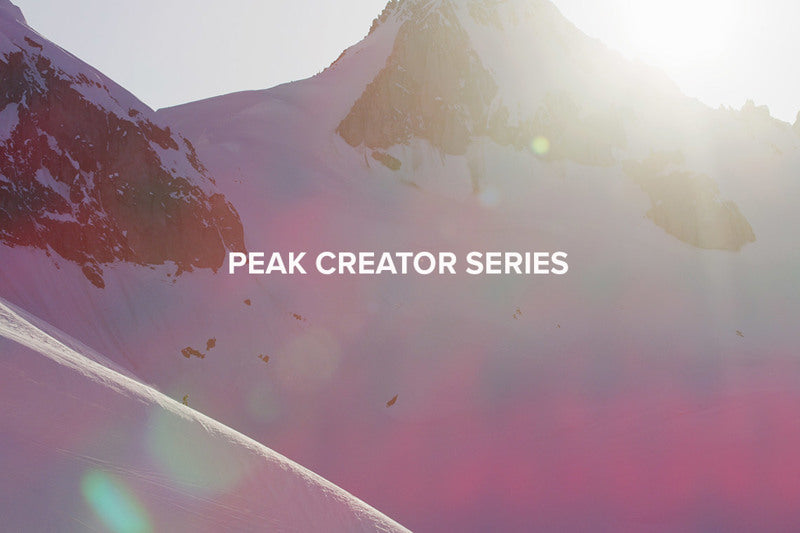
Suunto celebrates peak creators
Since forever, the great outdoors and its misty forests, silhouetted mountain ranges, and craggy peaks have inspired creatives of all ilk, whether poet, painter, musician or photographer. The awe nature strikes in us gets the creative energy flowing. The resulting work has, in some cases, inspired the masses and shapes how we see and protect the natural world.
At Suunto we believe this is worth celebrating. So we initiated our Peak Creator film series, in which we met four creators - a trail builder, a photographer, an architect and an artist - and found out how the natural world inspires what they do. We’ll publish a short film about each of them in the coming weeks.
Meet photographer Angela Percival, architect Ryley Thiessen, artist Jessa Gilbert and trailbuilder Dan Raymond in the Peak Creator Series.
The first film up, the trailbuilder sees his work more as uncovering what’s already there; next up, the photographer admits she’d rather be out shooting than indoors editing; then the architect explains how his mountain resorts bring people closer to nature; finally, we meet the artist who packs her painting kit and heads out for epic free rides.
Stay tuned for each film as it drops. And get your own creative juices flowing!
Watch Peak Creator Series episode 1 – The Trailbuilder
Watch Peak Creator Series episode 2 – The Photographer
Watch Peak Creator Series episode 3 – The Architect
Watch Peak Creator Series episode 4 – The Artist
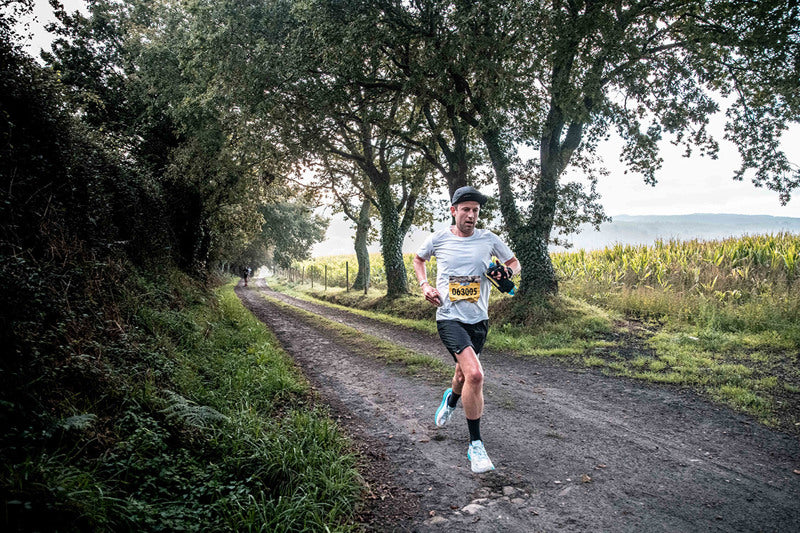
Running El Camino
At the end of September, a group of athletes in Spain came together and as a Suunto team ran the Red Bull Buen Camino in northern Spain. Meaning “good way” in English, buen camino is the traditional way locals greet pilgrims walking the Camino de Santiago.
Red Bull Buen Camino relay run follows the original path of the Camino de Santiago - the 314 km Camino Primitivo, which has the reputation as the toughest of all the El Camino routes because it starts in Oviedo, the capital of Asturias, and passes through mountainous country before reaching Santiago de Compostela.
Press play to see the Suunto team’s epic Camino run
The race consisted of 33 teams of roughly six people and included elite athletes. Over the 314 km, the teams gained more than 8565 vertical meters, and reached Santiago in three days.
All the members of the Suunto relay team live in Girona, Spain and came together to complete the challenge. “The must to be part of the team was that none of them had been to Santiago’s cathedral before,” says Nuria Carrera, in Suunto’s Spanish marketing team. “Most of them knew each other but not the whole group so we organised a meeting a few weeks before the run to create the team spirit that we had.
“Overall our team was extremely happy to be part of this adventure, some of them weren’t in this kind of challenge in a long time because of COVID,” Nurria continues. “Each member pushed themselves to their maximum and gave it their all.”
The team was a mix of local athletes and expats:
Emma Snowsill: A former Australian triathlete. She won the gold medal in triathlon at the 2008 Olympics.
Christian Meier: A former Canadian racing cyclist who rode professionally between 2005 and 2016.
Tom Austen: business man; founder of Pelotan. Cyclist but recently discovered the trail running world.
Deena Blacking: lives between Girona and London and has a strong passion for outdoor sports and adventure.
Aleix Ferrer: the youngest in the team. Entrepreneur and sports lover, he started with orienteering and is now focused on cycling and running.
Adrià Canimas: a fireman with a strong passion for the outdoors and the mountains.
Images: Roger Salanova
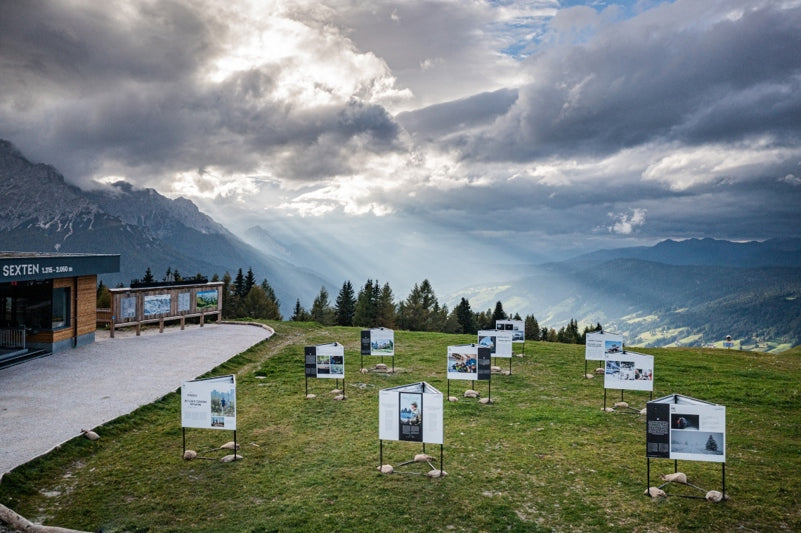
The AlpsFrontTrail - the aftermath
It’s been a year since a group of German, Austrian and Italian athletes completed a relay run along what was the frontline between Italy and Austria during the First World War.
They did the AlpFrontTrail run to explore their own history and to remind the public what can happen when divisions fester and walls go up. As they ran the 850 km frontline, they visited former military forts and met local guides who explained the events of that dark time. Each athlete was personally touched, and went home with a newfound appreciation for the importance of remembering history.
Watch the just released film about AlpFrontTrail
“There are stories from that time that we find unimaginable today,” says Harald Wisthaler, a professional photographer who captured the journey. “There’s no one who’s still alive who lived at that time. But we met a lot of older people who said their family was in the war.”
Harald combined his photography, bits of history and personal experiences from the project to create the AlpFrontTrail exhibition, which travelled through six towns in the Alps over summer. It’s not too late to see the exhibition, which is now being exhibited in Monte Elmo, Italy, next to the largest sundial in the world.
The exhibition has been well received as it has travelled through the Alps, reminding many younger people about the war in the mountains that happened 101 years before. “Many people realised, especially after everything that happened with COVID, that borders are still here, and they can be closed. Now, the border is just a line on a map. But 101 years ago it was much more.”
All images by Harald Wisthaler
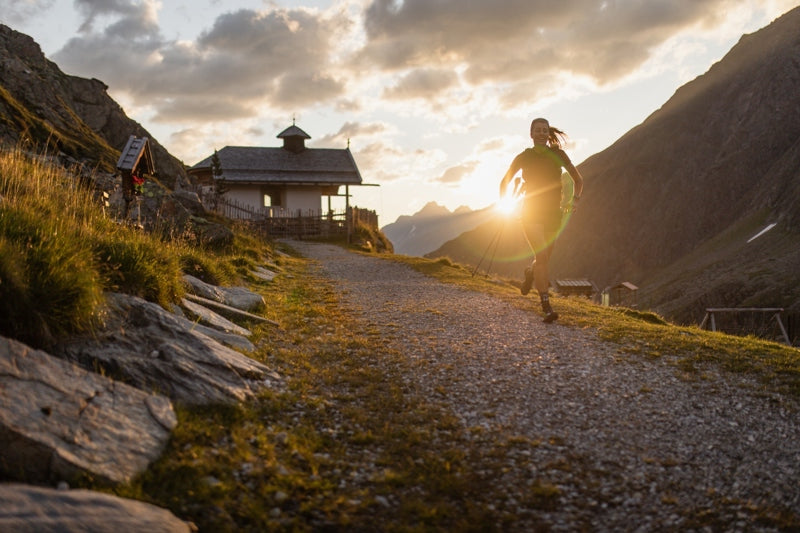
3 stories from World Vertical Week summer edition
We have been blown away by the community participation in the first ever summer-fall World Vertical Week. In seven days, more than 70,000 Suunto users got involved. And we saw massive increases in individual performances compared to the previous winter edition of World Vertical Week.
As usual, we ran the World Vertical Week photo competition with three lucky people winning a Suunto 9 Baro. We asked our Instagram followers to share an image with a Suunto app data overlay from one of their ascents over the week and tag #verticalweek. We received a ton of entries so it was tough selecting three winners. But in the end, three unique and amusing images jumped out at us - read on to see!
Cheese on top!
It was Frenchman Quentin Simon’s first World Vertical Week, and what a way to make a splash! That week he also had his bachelor party and his buddies did a great job of embarrassing him. They dressed him up as a big slice of cheese and hiked up a mountain with him. “All the people we crossed on the mountain wondered why there was a guy dressed up as cheese,” Quentin says. “They were surprised because we were on small tracks and the costume wasn’t appropriate for hiking.”
How does he feel about climbing hills after his first World Vertical Week? “I love going uphill for many reasons: the feeling when you arrive at the top, the view (not always), the speed when you go down and the feeling of having achieved something when you get back home!”
Double congrats, Quentin - for winning a watch and for tying the knot!
Creative overlay
It was also Austrian runner Juliane Költringer’s first World Vertical Week. She found out about it on Instagram and got creative: scribbling her own overlay that indicates the equally creative way she chased vertical meters over the week: “I went for a trail run, did some hill sprints and went mountain biking after work,” Juliane says. “I convinced my best friend to take a coffee to go and walk up the Schlossberg (473 m) in Graz instead of sitting in a café. And on the weekend I went for a hike with my neighbors. For me, sometimes it’s just the little things, like always taking the stairs instead of the elevator! Or grabbing a sandwich and walking up the Schlossberg for lunch instead of sitting down. It’s nice!”
“Oh, and getting a Suunto watch is really awesome - I’m so excited!” Juliane continues. “I never had a sports watch before. I am curious to find out about my heart rate while working out. I am definitely going to use it when I’m out running to see my pace and then hopefully adapt my performance. Who knows, maybe this new Suunto watch will get me to a new level of training?”
We hope so, Juliane! Congrats, and happy training!
Homemade sandals
This was Eiji Shibuki’s second World Vertical Week. After participating in the previous winter edition, he wanted to see how much he could improve. Based in Saitama, Japan, Eiji comes from a road cycling background and only recently made the transition to trail running after competing in a unicycling mountain race in which he had to run technically difficult sections. In the process, he discovered he loved trail running. “But I kept hurting my legs even though it was a short distance,” Eiji says. “My knees hurt, my nails peeled, and so on.”
This is what eventually led to him making his own homemade running sandals. He discovered barefoot running, Vibram FiveFinger shoes, and found this helped him avoid injuries and discomfort while trail running. “Just as humans used to go barefoot in the past, I have learned how to run efficiently and without breakdowns by devising ways to run in sandals or Vibrams without hurting my soles, and this is the reason why I use sandals,” he says. “There are two main types of sandals: sandals that are sold and homemade sandals. Mine are self-made, cut from 6mm thick Vibram sheets.”
We’re impressed by your ingenuity Eiji! Congrats, and happy running!
Main images: Photos by Philipp Reiter
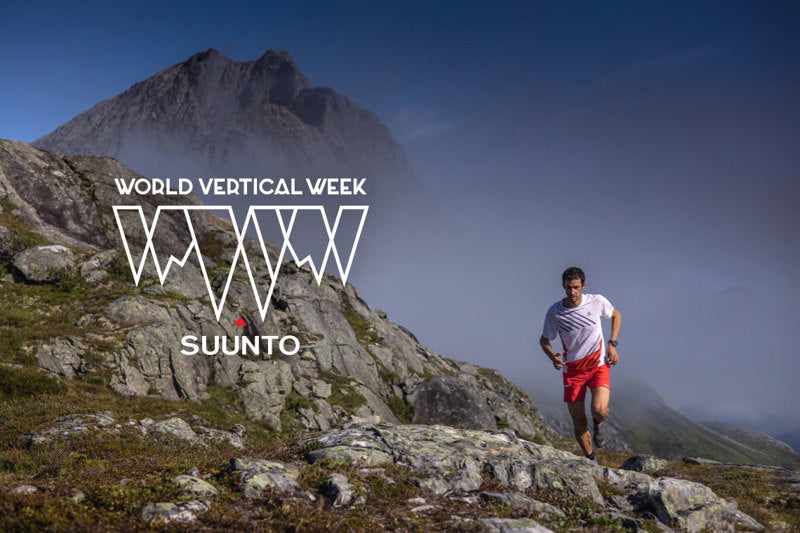
World Vertical Week 2021 summer edition raises the stakes
Wow. 70,000 participants in seven days. That’s how many people chased vertical meters with us in the first summer-fall edition of World Vertical Week. The Suunto community’s outdoor summer sports enthusiasts raised the stakes in more ways, proving they can hold their own with the vertical appetite of the winter outdoor sports tribe any day. The ball is now in your court winter tribe!
Read on to see the results of the national and sport-based rivalries and see who came out on top!
The reign continues
Austria deserves an applause. It’s the country with the highest average climb per activity, 465 m, a little higher than its winter result, when it also achieved first place. The alpine nation has held first place in this category for five of the last six editions. It only lost its crown in 2019, falling to fifth place. What’s more, it finishes in the top five of six more categories. Well done Austria!
Punching above its weight
Slovenia, a tiny mountainous nation of 2.1 million people, clearly has a serious appetite for pushing uphill. Aside from Austria, it’s the only other nation to feature in the top five of seven categories. Respect!
The three amigos
Spain comes in first for the total ascent per country, followed by Italy and France. These three are always battling for pole position in this category. Spain has come first in this statistic for two editions straight now.
Huge individual performances
Perhaps one of the biggest surprises from this edition of the World Vertical Week was the massive individual performances. Whereas during the previous winter edition there was only nine individuals who surpassed 10,000 m of vertical gain over the week, this time there have been 59 people to do this - that’s a 500% increase!
Also a big increase was the number of individual activities that involved more than 3,500 m of vertical ascent. There were only 89 of these in the previous winter edition, and 218 this summer edition. Impressive!
Trail running rules
It seems like trail running is the popular, go to summer sport and that trail runners like the challenge of a climb. Of all the climbs that involved 1000 m, trail running made up 34% of them. And that percentage only increased for activities with over 2000 m of ascent; trail running made up 47% of these.
The biggest climbs
They say mountaineering is 75% perspiration and 25% inspiration because it’s the outdoor sport that involves epic, often gruelling vertical ascents. That’s why it comes in first place for the highest average vertical ascents per activity type, with trail running coming a distant second.
Alpine nations live to climb
Italy, Austria and Switzerland all enjoy incredible alpine landscapes so no wonder mountaineering is so popular among them. Respectively, they take first, second and third for the highest average meters in the mountaineering activity type by nation.
Go Japan
We know Japan is a mountainous nation with an incredible trail and hut network. So it’s not a surprise to discover trail running is hugely popular there. Japan came out on top for the highest average vertical meters per activity for trail running: 806 m. Is Japan the next big trail running destination?
Top 5 nations in different activity types
Mountaineering
Italy 962m
Austria 891m
Switzerland 891m
Germany 881m
France 820m
Trail running
Japan 806m
Italy 703m
Austria 667m
Slovenia 645m
Switzerland 617m
Mountain biking
Austria 705m
Switzerland 632m
Italy 597m
Slovenia 576m
Spain 462m
Trekking & hiking
Slovakia 550,0m
Austria 549,7m
Italy 526m
Switzerland 502m
Slovenia 405m
Cycling
Italy 426m
Portugal 415m
Slovenia 379m
Spain 370m
Austria 348m
Running
Ecuador 212m
Slovenia 189m
Switzerland 160m
Norway 152m
Ireland 139m
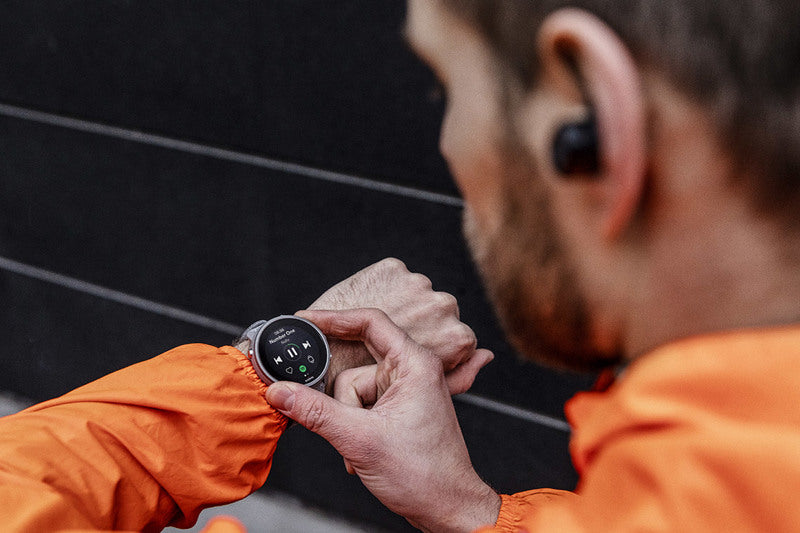
Listen to music on the go with Suunto 7
Spotify Premium users can download their favorite albums, playlists, and podcasts to listen offline with this new feature. Other users can only stream their tunes in Shuffle Mode using a WiFi or cellular connection or download their favorite podcasts to the watch.
Here’s how to use Spotify offline on a Suunto 7:
Using the Spotify app on your Suunto 7, find the music and podcasts you want to download and have offline.
Tap “Download to watch.”
To check on the progress, head over to the Downloads section on your Suunto 7.
Once you’ve downloaded the selected playlists, albums, or podcasts in your library, you’ll see a little green arrow next to their names.
Connect your headphones and start listening, no matter where you are!
Head to Google Play to download the Spotify app or update your watch to the latest version. Once the new features are available, you’ll be on your way.
*Requires your Suunto 7 to run at least Wear OS 2.0 or higher. Please make sure you are also running the latest version of Spotify on your device.
READ MORE
The benefits of training to music and making your best playlist
Meet the Mambo Brothers, two health conscious DJs living the nightlife
Head back to work on top of things with a Suunto 7 smartwatch






































































